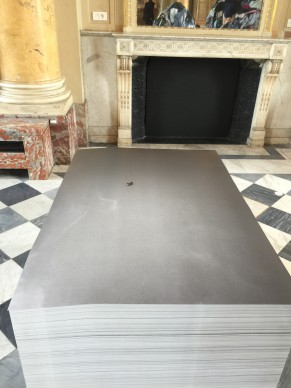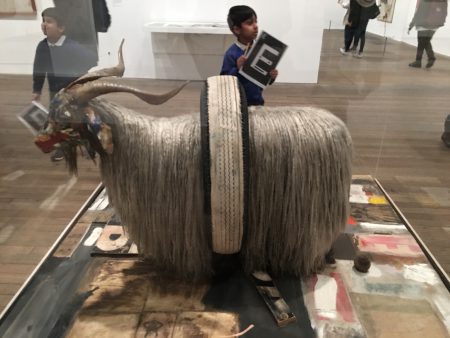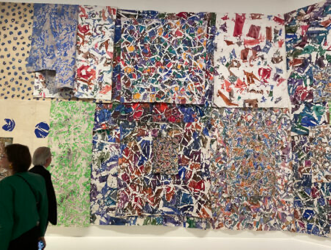For one month, the site’s spectacular 18th-century drawing rooms serve as a backdrop for the remake of a similarly titled exhibition held in London’s Serpentine Gallery some 20 years ago. It’s a special operation, because here you can eschew the two taboos that ordinarily rule museums: here you can touch and you can take. The exhibition’s curators are both fond of utopias that can be transformed into something concrete: French artist Christian Boltanski and Swiss curator and critic Hans-Ulrich Obrist, who is currently director of international projects at the Serpentine Gallery and can be found in action around the world.
From the exhibition you can take home Gilbert & George badges saying “Decriminalize Sex” and candies by Felix Gonzalez-Torres that you can eat as relics or hosts; you can take photo-booth pictures and exhibit them (Franco Vaccari); you can take used clothes from a pile Boltanski created; you can try heaven-sent pills whose effects are unknown (Carsten Holler); you can fish for tins of good sardines (Daniel Spoerri); you can grab postcards that say “Touch Me,” signed by Yoko Ono; you can walk a dog through the exhibition (Koo Jeong-A); you can win a lunch date with Douglas Gordon; you can trade a valued object against another one (Roman Ondak); and more, and more—for a total of 38 works.
This isn’t just entertaining. Here’s what the curators have to say about it.
Christian Boltanski: “In the 1990s, Hans-Ulrich and I would often meet in the café I go to, which is also my office, La Closerie des Lilas. That’s where we imagined ‘Do It,’ where artists describe their work, which are produced by museums on the imperative condition that the artists themselves aren’t present. It’s the same principle as with what happens with a musical score and its interpretation. At the Serpentine, with ‘Take Me I’m Yours,’ we put an end to the taboo that keeps people from touching the works. Today, 20 years later, the art world has become professionalized. It’s clearly become less entertaining. Young artists are very serious. They speak of strategies. We wanted to show that we could do other things—be generous, have fun, in the tradition of Dada, of the Surrealists, of Fluxus. This exhibition poses the question of the relic in art, which is comparable to the one observed in religion. Felix Gonzalez-Torres was educated in a religious school. His use of candy is really a repeat of the principle of the host.
Obrist adds: “In the new formula presented in Paris, we doubled the number of artists. This is an offering that’s constantly evolving. Nothing is fixed. You have to keep learning and integrate pieces that are pertinent, such as digitally shared works. This exhibition is an antidote to the commercialization that’s affecting every field. Each visitor can take the exhibition home. This way, it’s going to be scattered in thousands of homes, each person deciding what he or she wants to do with these objects.”
Support independent news on art.
Your contribution : Make a monthly commitment to support JB Reports or a one off contribution as and when you feel like it. Choose the option that suits you best.
Need to cancel a recurring donation? Please go here.
The donation is considered to be a subscription for a fee set by the donor and for a duration also set by the donor.








